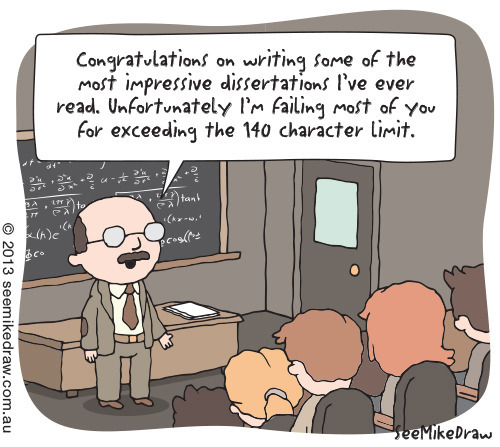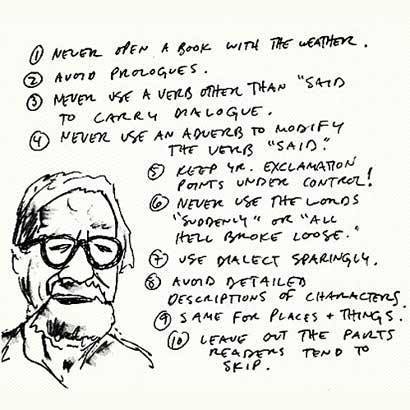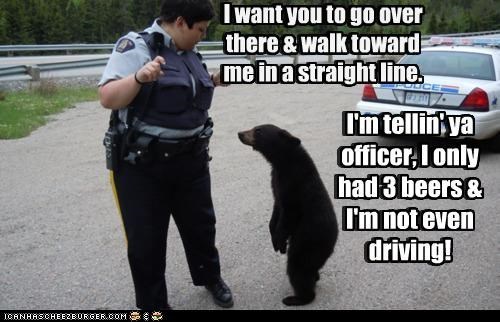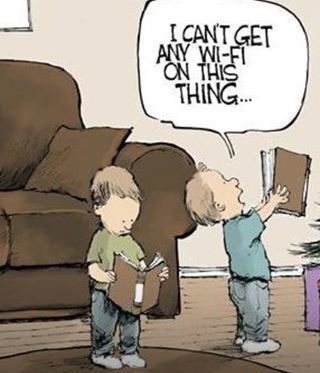Tyson Adams's Blog, page 81
August 20, 2013
RIP Elmore Leonard
I was saddened to hear of Elmore Leonard’s passing at age 87. He leaves behind a legacy of fantastic writing and his influence will continue. As a tribute I’m posting his ten rules of writing, but I also recommend picking up one of his many works to see how he could impart more in a few sentences than others could in an entire chapter.
Tagged: Boyd Crowder, Elmore Leonard, Justified, Raylen Givens, Reading, Right What You No, RIP, Ten rules of writing, Tribute, Tyson Adams, Writing

August 19, 2013
How to commit the perfect murder to paper: Advice from David Thomas, aka Tom Cain

David Thomas’, aka Tom Cain, first novel
I’m not a fan of The Daily Fail. They really do seem to swim in the shallow end of the wading pool of intelligence. That said, today they featured an article from a very good novelist, someone with whom I’ve had some interesting conversations: David Thomas / Tom Cain. So like any good blogger, I’ve stolen the article and reposted it here. Enjoy!
All over the world, on countless flights, heading to an infinite number of sun-loungers people are burying their heads in stories about secret agents, serial killers, ace detectives, evil villains and sexy heroines.
Thrillers are a huge business. They make up about a third of all books sold, and 60 per cent of them are bought by women.
For the very top writers, the rewards are astonishing. In 2009, James Patterson signed a four-year, 17-book deal worth almost £100 million. At the peak of Da Vinci Code mania, Dan Brown was making more than £50 million a year.
For every one of those megastars, of course, there are hundreds of professional thriller writers who just about make it pay – even a best-selling paperback in the UK, shifting 100,000 copies won’t earn much above £50,000 in royalties – and thousands of wannabes. I’m lucky enough to come in the ‘make it pay’ category. So I know what the job entails. And trust me, it isn’t easy.
One Monday morning in June 2006 my literary agent sent out a book proposal to publishers: the first 150 pages of a thriller called The Accident Man that I’d written under the pseudonym Tom Cain. The book had a very simple, high-concept premise. Its hero, Sam Carver, was the man who killed Princess Diana. Her name appeared nowhere in the book. But on the night of August 31, 1997, Carver makes a black Mercedes saloon crash in Paris.
He’s been told the Merc’s passenger is a terrorist. But of course it’s actually a woman – the most famous woman in the world.
By lunchtime on Wednesday, I’d received a six-figure offer for the UK rights to the book and a sequel and Hollywood bought an option on the film rights.
Before you even try to write a thriller, take a good look at how other people have done it. It looked like an overnight success, but I’d spent two years producing one useless draft after another. My agent made it perfectly clear to me that I’d made a bundle of rookie mistakes. My plot didn’t hold together. My writing was hopelessly cluttered with unnecessary descriptions of Parisian streets and buildings as I tried to stuff all my endless research down on to the page.
The characters weren’t believable and the one the agency boss liked best – Carver’s love-interest, a Russian girl called Alix – was killed in the second act. The only crumb of comfort the agency boss could offer me was: ‘I never quite hated it enough to stop reading.’
In the end, we managed to fix all the problems. But in 25 years as a journalist and author, during which I’d written countless articles, edited three magazines and published half-a-dozen non-fiction books, nothing had been as difficult as writing a half-decent thriller.
But what if you want to write a thriller of your own? Here are ten tips that I would give to anyone who dreams of seeing their book piled up in airport bookstores . . .
1) Study the masters…
Before you even try to write a thriller, take a good look at how other people have done it. Read every book you can get your hands on, but watch great TV series and movies, too. The Accident Man was hugely influenced by the way the writers of 24 kept multiple storylines running simultaneously, each with its own cliffhanger, so there was always someone, somewhere, in desperate trouble. 24 was relentless, it never for one moment let you relax. And you always wanted more.
2) …but don’t overdose on them
I devoured Lee Child’s Jack Reacher books. I tried to imitate his terse, punchy, bone-dry style. The result was garbage. Then I realised that Lee writes the way he does because that’s how he naturally expresses himself. So I went back to the way I write naturally, and it made a huge difference. Your book will work best if it’s told in your voice.
3) Structure, structure, structure…
Property is all about location, thrillers are all about structure. Everything has to fit together with the precision of a Swiss watch, powered by a coiled spring. Frederick Forsyth’s The Day of The Jackal is a masterpiece of construction. I once drew a chart on a couple of sheets of A2 paper that consisted of a scene-by-scene analysis of Jackal, showing which characters appeared when, and how Forsyth balanced character development, plot and action over the course of the book. It really helped me understand the structural skeleton beneath the flesh and blood of the words.
4) Show, don’t tell
Always make your point through action and dialogue, rather than exposition. At the beginning of The Accident Man I had a few paragraphs explaining that Sam Carver was an assassin who created fatal ‘accidents’. An American publisher said: ‘Nice idea, but it would be much better if we could see him do it.’ So I wrote a new opening scene in which he killed a people trafficker by sabotaging his helicopter using a miniature spanner, a hacksaw and two blobs of Blu-Tack. So we saw Carver at work. Better.
Some thrillers are whodunits: the hero arrests the bad guy. Some are action thrillers: the hero kills the bad guy. Either way, you’re going to be thinking of new ways to kill people and cool weapons to kill them with
5) It’s the people, stupid
Stieg Larsson thought his Millennium Trilogy was all about the sexism and corruption at the rotten heart of Swedish society. But the millions who devoured The Girl With the Dragon Tattoo couldn’t care less about that. They just fell in love with an emaciated, autistic computer genius called Lisbeth Salander. It’s the characters in a book – and that means the villains, lovers and supporting cast, too – that make it work. So if you ever think, ‘I’ve got a great idea for a thriller,’ make sure you’ve got great characters for it too.
6) Grab them by the throat and their minds will follow
If you don’t grab your readers’ attention in the opening chapter, they’ll find another book. Robert Ludlum’s The Bourne Identity has one of the all-time great opening sequences: a man, fished from the Mediterranean, unaware of who or what he really is, unknowingly possessed of all the deadly skills of a CIA assassin. The men from Hollywood threw away 90 per cent of what Ludlum wrote in the Bourne trilogy. But they kept that opening and it gave them a billion-dollar franchise.
7) Think like a killer
Some thrillers are whodunits: the hero arrests the bad guy. Some are action thrillers: the hero kills the bad guy. Either way, you’re going to be thinking of new ways to kill people and cool weapons to kill them with. So clip grisly news stories. Read books about real killers. Go on the gun-nut channels on YouTube. And read books by Patricia Cornwell and Jonathan Hayes. They’re professional forensic pathologists. Dead bodies are, quite literally, their business.
8) Count the bullets in the gun
If you want your readers to believe your story, get the details right. Either write about what you know, or do your research properly. Don’t have your hero firing 15 bullets from a Walther PPK if it can only hold nine. And speaking of James Bond’s favourite gun, Ian Fleming pulled off a brilliant trick when he created 007. The idea of a cool, sophisticated, lady-killing assassin, touring the world On Her Majesty’s Secret Service, bumping off bad guys who wanted to rule the world was as much a fantasy as Harry Potter playing Quidditch. But because the details were so brilliantly observed – Bond’s cars, his Sea Island cotton shirts, the exotic locations – it all felt completely real.
9) Always think of Option C
The fun part of thriller writing is getting your characters into dangerous situations and then getting them out again. An editor once gave me a great tip: put your protagonist in a situation where they have to choose between two options, A and B. Then write option C. In one of my books, Carver is on holiday in the Greek islands with a girl. They’re having lunch. The restaurant is attacked by gunmen. The girl is shot. Carver just escapes, after a frantic chase. He stops for a second to think. Should he go after the gunmen, or should he get the hell off the island? That’s options A and B. Then the phone rings. He takes the call. It’s the girl – the one who’s just been shot dead. And that’s Option C.
10) If you’re a man, ditch the dumb blondes and tough girls
You have a male lead, and chances are he’s going to want a girl. And she’s going to be sexy, sultry and splendidly beddable. That’s fine – being ravished by the hunky hero works for girls too. Just don’t make her a cliché. Very few men now dare write a ditsy, screaming blonde. But many dream up superchicks who are as tough and deadly as any man. Most women don’t see themselves that way. Strong, yes. Gorgeous, certainly. But intelligent, complex and vulnerable, too, if you don’t mind. And if you’re a woman, bin the bad guys and the goody-goodies. Men are more complicated than that.
…but finally, and most importantly
Forget the rules . . . except one. The first four, clunkingly tabloid words of The Da Vinci Code, ‘Renowned curator Jacques Saunier’ tell you that Dan Brown can’t write for toffee. There’s not a character in the book that’s close to being interesting and the ‘facts’ on which the whole thing depends have been debunked. Yet somehow it’s is completely unputdownable. So in the end, the only rule that really counts is: keep the reader reading.
‘Revenger’, Tom Cain’s latest Sam Carver novel is published in paperback by Corgi, £6.99. ‘Ostland’, by David Thomas, is published by Quercus, £16.99
Tagged: code mania, Da Vinci Code, Dan Brown, David Thomas, evil villains, princess diana, Reading, Right What You No, sun loungers, thriller writers, Tom Cain, Tyson Adams, who killed princess diana, Writing, Writing tips

August 16, 2013
Serif and sans-serif fonts
I don’t like to claim a lot of expertise in formatting, layout and graphic design. That isn’t to say I can’t do it, nor that I haven’t produced a couple of my own publications and newsletters. But I found myself in an argument recently defending using both serif and sans-serif fonts, which is like arguing over what colour black you want to wear to a metal concert (that’s a no-brainer: the darker one).
Anyway, there are plenty of anal retentive science nerds like me who have gone and done research into what fonts work best for which applications. There are actually a surprising number of research studies on fonts and readability.
First, let’s define what is meant by serif and sans-serif fonts. (From Scribe Consulting) Consider the following characters. The first is set in Georgia, a lovely serif font. The second is set in Verdana, an easy-to-read sans-serif font.


serif
sans serif
Notice the small decorative flourishes at the ends of the strokes in the left character. These are called serif. The right character does not have these strokes and is said to be a sans-serif font. Sans is the French word for without. So I could be currently sans-pants.
The most common examples of these two font types are Times New Roman (serif) and Arial (sans-serif). Bleeding Cowboys would be an example of an overused serif font that is for try-hards, whilst Comic Sans is an overused sans-serif that shows a lack of taste.
Now there are some simple rules of thumb when it comes to using serif and sans-serif fonts, which are backed up by science. The first rule is that thumbs only hit the space bar. The second rule is:
Use serif for printed work
Serif fonts are usually easier to read in printed works than sans-serif fonts.
This is because the serif make the individual letters more distinctive and easier for our brains to recognise quickly. Without the serif, the brain has to spend longer identifying the letter because the shape is less distinctive.
The commonly used convention for printed work is to use a serif font for the body of the work. A sans-serif font is often used for headings, table text and captions.
The third rule is:
Use sans-serif for online work
An important exception must be made for the web. Printed works generally have a resolution of at least 1,000 dots per inch; whereas, computer monitors are typically around 100 dots per inch. Even Apple’s much vaunted retina display is only around 300 dots per inch — much lower than print.
This lower resolution can make small serif characters harder to read than the equivalent sans-serif characters because of their more complex shapes.
It follows that small on-screen text is better in a sans-serif font like Verdana or Arial.
Tagged: Apple, Arial, Bleeding Cowboys, Books, Comic sans, Editing, Fonts, Format, Formatting, Layout, Readability, Reading, Retina display, Right What You No, sans serif font, sans serif fonts, Sans-serif, Screens, scribe consulting, Serif, serif and sans serif, serif and sans serif fonts, Times New Roman, Tyson Adams, Verdana, Writing

August 13, 2013
Bookends?
I still think that the best bookends are other books. Our bookshelves are actually two layers deep, and that isn’t accounting for the two boxes of young adult books that are sitting in a cupboard because they don’t fit on any shelves.
Tagged: Bookends, Books, Bookshelf, Bookshelves, cupboard, Humor, Humour, Literature, Reading, Right What You No, shelves, Tyson Adams, young adult books

August 8, 2013
Know your knives
The average writer is normally not someone prone to being a gun or knife nut. Sure, they might have a gun or two, they may have a kitchen drawer full of knives, but that doesn’t mean they know which one needs to be used in the scene where the zombies have just broken through the barrier erected by the pirates who were lucky to survive the assault of the purple ninjas. That means extra research. And ninjas.
Below is a handy graphic that covers a few of the basic blade types of knives. Obviously there are variations on these types and, of course, the difference between a serrated and plain edged blade.
Also check out this handy video:
Tagged: Blade types, Clip point, Drop point, Kamasu kissaki, Knives, Needle point, Right What You No, Sheepsfoot, Spear Point, Spey blade, Tanto, Trailing point, Tyson Adams, Wharncliffe, Writing

August 6, 2013
Word limits
 Word limits are a funny thing. I’ve never had a problem being succinct, in fact I can be too brief in my writing. Yet other writers are known for sitting down with editors to cull half their manuscript. There are other writers still that should have sat down with an editor and culled half their manuscript and saved the readers all that page skipping.
Word limits are a funny thing. I’ve never had a problem being succinct, in fact I can be too brief in my writing. Yet other writers are known for sitting down with editors to cull half their manuscript. There are other writers still that should have sat down with an editor and culled half their manuscript and saved the readers all that page skipping.
This is one of the reasons to like Twitter. It forces you to practice creating a thought or sentence in a manner that may be foreign. For example, the complex phrase:
I disagree with your supposition as it is currently unsupported by any evidence, either presented by yourself or in the scientific literature, thus there is no way you can sway my position.
Can be replaced with:
Lol, moron!
This says everything that is needed and doesn’t dance around the topic. Conversely the reply to this can be shortened from:
Whilst you are allowed to disagree with me, my opinion still stands. I cannot provide a summary of the relevant scientific literature at this time, but this is information that is readily understood and referenced in the literature. Thus I will endevour to provide a few examples when I am able to, but in the meantime I’d invite you to read further on the topic, as I suspect that you will agree with me once you have.
Can be replaced with:
Well screw you and the horse you road up on.
The trick is to start with what your key points are and not overuse exposition to explain those points. The 140 character limit can help with this a lot.
In the meantime, if you aren’t a fan of See Mike Draw, I suggest you become one now.
Tagged: 140 characters, Cartoon, Composition, Funny, Humor, Humour, Right What You No, See Mike Draw, seemikedraw, Succinct, Twitter, Tyson Adams, word limits, Writing, Writing tips

August 1, 2013
New Sobriety Tests
Walk in a crooked line
Let’s face it, walking in a straight line is something people now practice. Make the line crooked and you’ll quickly have people staggering like drunken zombies, regardless of the number of drinks they’ve had.
Not buy a kebab
Somewhere between the pub and home there is always a kebab store. If someone can walk past it and not buy a kebab, then they are sober.
Discuss politics without yelling
Although this may just mean the person yelling is a politician. Either way, just lock them up to be on the safe side.
Not heckle a comedian
Unless they are on this list, in which case don’t stop at heckling, molotov invented a drink that needs to be served to them.
Check that they don’t use the phrase “I’m not drunk.”
May be combined with the phrases “I’ve only had one/couple of drinks” or “Just a wine with dinner.”
Refuse to sing karaoke
Much like the kebab, there is no way a drunk person cannot refrain from busting out a classic tune in all its warbling, tone deaf, shouted glory.
Tagged: Alcohol, Beer, classic tune, Comedian, crooked line, Drinking, Drunk, drunk person, Fun, Funny, Heckle, heckling, Humor, Humour, Karaoke, Kebab, Politics, Right What You No, tone deaf, Tyson Adams, walking in a straight line, Whiskey, Wine, Yelling

July 30, 2013
Books to Movies: The Stats
Tagged: Book adaptations, Books, Books to Movies, Box Office Bombs, Movies, Numbers, Reading, Right What You No, Statistics, Stats, Success, Tyson Adams, Writing

July 26, 2013
How to spot inbreeding
Look for Picasso abstract facial features.
You may have to wipe away the drool from their face to properly assess this.
Look them directly in the eye and then glance sideways to see if they have another head.
Not to be mistaken with conjoined twins or a couple with separation anxiety.
Do you have to shake their hand or just hold it?
Could they also mix some paint or a good martini for you?
Check for matching leg lengths.
Some inbreeding mountain people have one leg longer than the other to aid with circumnavigation of mountainous terrain.
Problems answering questions in clear English.
Although this could just mean they work for Fox News and don’t have the teleprompter on.
Tagged: Fox News, Funny, Hillbilly, Humor, Humour, Inbreeding, Picasso, Polydactyly, Rednecks, Right What You No, Six fingers, Tyson Adams

July 23, 2013
Kids these days
Okay, just to be serious for a moment: Do you see a difference between these two cartoons?
Some of you may have seen the awesomeness displayed on The Oatmeal in response to people stealing his cartoons and taking his authorship off of the picture. Well, here is another example. The second cartoon was the one I was going to post, but I realised that it didn’t have the creator’s signature on it and it would be good to make sure that they were able to be tracked down. Ideally I’d link to the original, but that isn’t always possible, especially when someone has decided to edit out the part that would help us all identify the author. It is clear that the author isn’t even asking for money, the cartoon is freely published on the web, yet someone has decided to remove the content creator as though they aren’t important.
Free content is great, so many people with great ideas are creating stuff to entertain others just because they enjoy it. I’m going to try and make sure the authors (content creators) are acknowledged when possible, I hope everyone else does too.
Tagged: Acknowledgement, Author, Authors, Books, Cartoon, Comment, Content Creator, Copyright, E-books, e-reader, ebooks, Ereader, Funny, Humor, Humour, Kids, Paper, Reading, Right What You No, Tyson Adams, Wifi












